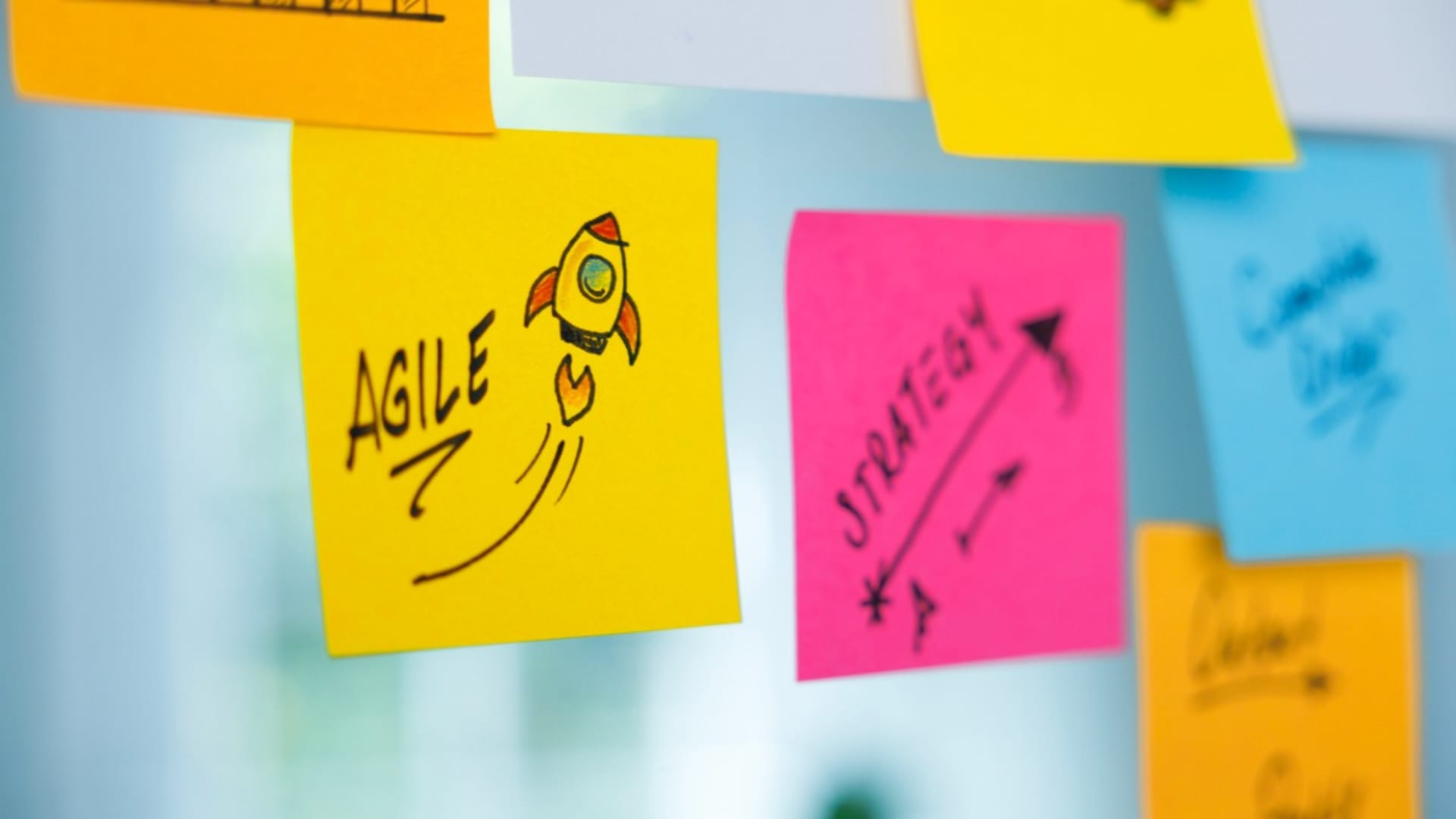Agile has become a crucial methodology for building and delivering quality software efficiently. By embracing iterative development, cross-functional collaboration, and continuous adaptation, Agile empowers teams to thrive amid rapidly changing requirements.
But even with the right processes, the success of an Agile transformation hinges on building the optimal team. Whether you are a startup adopting Agile from the ground up, an established company transitioning methodologies, or a manager aiming to level up your group, structuring a balanced, skilled Agile development team is essential.
This guide will cover the core roles you need and the critical skills to look for when assembling your Agile software development team. You will learn proven tips for maximizing coordination and cohesion as a unit.
An empowered, aligned Agile team is indispensable for developing amazing software with speed and adaptability. By understanding the ingredients for assembling the ideal Agile development teams, you can set your next software project up for success.
Before diving into how to assemble an ideal Agile team, let’s first understand the foundations of Agile software development.
Understanding Agile Software Development
The Agile Manifesto was published in 2001 by software developers aiming to propose alternatives to to documentation-heavy, traditional software development approaches. It established 4 key values:
- Individuals and interactions over processes and tools
- Working software over comprehensive documentation
- Customer collaboration over contract negotiation
- Responding to change over following a plan
These values favor adaptive planning, cross-functional teams, end-user collaboration, and rapid iterations. The manifesto also defined 12 principles that embody the Agile mindset.
Now that we have a grasp of the core values behind Agile, let’s explore some of the popular methodologies that embody these principles.
Agile Methodologies
Popular Agile methodologies include:
- Scrum: Focused on fixed-length sprints and daily standups
- Kanban: Visual system to limit work-in-progress
- Lean: Eliminating waste from processes
- XP (Extreme Programming): Short development cycles and test-driven development
While these methodologies differ in practices, they share the foundational values and principles of Agile defined in the manifesto. With this common mindset forming the backbone, the success of Agile lies in the specific roles and responsibilities each team member assumes.
Agile Teams, Roles, and Responsibilities
The Agile software development team’s roles and responsibilities vary according to the specific methodology you’re using. There are many specific positions depending on the particular approach you use—Scrum, for example, is the most popular Agile methodology.
That said, Agile teams are always structured in a way that is conducive to collaboration and adaptability. Examples of the roles you will generally find include:
- Product Owner: The product owner makes critical decisions regarding the software development process and the product itself. Like a proect manager, they devise the roadmap to follow and ensure that the software goals align with the overarching business value goals. They also act as a bridge between and among departments like the engineering/development team and the business team.
- Team Lead: Called a Scrum Master on a Scrum team, the team lead essentially acts in an Agile management capacity, keeping the team on task and preventing issues from interfering with the work or escalating. They also monitor the Agile team’s efforts, ensuring that they have the proper resources, and serve as a point person.
- Developers: The development team builds the software. They will follow Agile principles—and perhaps a specific Agile methodology—to create a product that meets the stakeholder requirements. When following Agile, the developers work in incremental development phases to improve the quality, helping them stay on track and be more productive.
- Architect: The architect examines how the system works, aligning the goals and objectives with the structure of the program or system. They also devise solutions for fitting the product into the entirety of the enterprise.
- Designer: “Designer” usually refers to the user experience (UX) designer. This individual lays out and builds the user interface (UI) and ensures that the product is appealing in multiple senses—far more than visually speaking.
- Testers: In contrast to some other developmental processes, in an Agile environment, testing and quality assurance aren’t left to the end—they happen throughout development. This means that the testers catch bugs and defects, along with any other issues, earlier on, making it easier to resolve them before they interfere with the product and its release.
- Stakeholders: The stakeholders are the individuals who are invested in the product and its success. They might be organizational leaders, managers, clients, partners, and others. While they are not involved in building the product, they do play an important role in defining requirements and communicating their needs. The Agile team continues to keep the stakeholders informed of their efforts and will receive frequent feedback.
While understanding the roles is essential, the effectiveness of each role is determined by the qualities the individual possesses. So, what makes an Agile team member truly effective?
Key Characteristics of Effective Agile Team Members
In Agile, success goes beyond just technical abilities. Soft skills bridge the gap, facilitating smooth collaboration and effective adaptability in a constantly evolving environment. They ensure that team members not only navigate changes with ease but also communicate and collaborate seamlessly. It’s these interpersonal attributes that often determine an Agile project’s success or derailment.
Let’s delve deeper, starting with a key trait: adaptability to change.
Adaptability to Change
The very essence of Agile is responding positively to change. It’s a method built around the principle of embracing alterations in requirements, even late in the development process.
An Agile team member sees changes not as interruptions, but as opportunities. They understand that changes often arise from fresh insights, making the product more relevant and useful to the users.
To thrive in an Agile environment, team members must possess a mindset that isn’t rigid. They should be prepared to pivot their strategies based on new data or stakeholder feedback.
Effective Communication
Within an Agile framework, communication is frequent. Whether it’s a daily standup, a sprint retrospective, or just casual conversations, members are constantly discussing challenges, progress, and solutions.
Clear communication is crucial. Misunderstandings can lead to errors, causing teams to deviate from their sprint goals.
Besides clarity, the ability to listen is equally significant. Being an active listener helps team members understand requirements, accept feedback, and make necessary improvements.
Collaboration and Open-mindedness
Collaboration is the lifeblood of Agile. Members work closely, pooling their expertise to ensure the collective goal – a successful product – is met.
An open-minded approach means team members value the opinions of their peers, even when they disagree. By considering various perspectives, teams can arrive at innovative solutions that a single viewpoint might miss.
Technical Skills: The Tools for Execution
While technical skills serves as an umbrella term, it encompasses a myriad of specific proficiencies and tools essential for Agile execution. Before diving into the nitty-gritty of these indispensable tools and languages, it’s crucial to understand their overarching importance. These skills act as the nuts and bolts of the Agile machinery, ensuring that the team not only ideates but also brings these ideas to fruition in a tangible manner.
Whether it’s programming, utilizing Agile platforms, or employing advanced software development practices, each element contributes to the holistic success of an Agile project. Let’s break down these components to understand their individual significance better.
Relevant Programming Languages and Tools
While soft skills are essential, an Agile team member should also be technically proficient.
Depending on the project, members should have mastery over relevant programming languages, whether it’s JavaScript for web development or Swift for iOS app creation.
Additionally, familiarity with Agile-specific tools like Jira for project management or Slack for communication can streamline processes, ensuring tasks progress smoothly.
Continuous Integration and Continuous Delivery (CI/CD)
CI/CD practices allow Agile teams to deliver code changes more frequently and reliably. This rapid rate of release ensures quick feedback and swift iterations.
Team members should be well-versed in using CI/CD tools, such as Jenkins or CircleCI, to automate the stages of app development.
Test-driven Development (TDD)
TDD is a modern software development approach where tests are written before the actual code. This methodology ensures that coding is systematic and meets the defined criteria from the onset.
Agile team members should be adept in TDD practices, ensuring that software is robust, functional, and bug-free.
In summary, being a valuable Agile team member goes beyond technical expertise. It requires a balance of soft skills to navigate the dynamic and collaborative environment of Agile. By fostering both these technical and interpersonal skills, Agile teams can ensure they consistently deliver quality software that meets user needs and expectations.
However, even with the right skills, the environment in which an Agile team operates can make a significant difference. Let’s delve into the elements of an Agile-friendly environment.
Building an Agile Environment
An Agile environment isn’t just about adopting Agile methodologies; it’s about cultivating a space that fosters communication, collaboration, and continuous improvement. The setting, both physical and virtual, can significantly influence the effectiveness of an Agile team.
The Role of Physical Space in Agile
The design and layout of a team’s workspace play an integral role in determining how effectively Agile principles are put into practice. Physical environments can either act as catalysts for collaboration and innovation or become unintentional barriers to them. Particularly in Agile, where interaction and adaptability are paramount, the spatial design of the workspace is not merely aesthetic—it’s functional.
Open Workspaces for Co-located Teams
For teams that share the same physical space, an open workspace has become synonymous with Agile thinking. But why?
- Fostering Communication: Without walls or cubicles, team members can freely discuss challenges, share ideas, and seek help. This ease of interaction promotes a seamless flow of information, essential for Agile’s iterative approach.
- Visual Management: Open spaces are conducive to visual tools like Kanban boards or Scrum task boards. These visual aids provide at-a-glance insights into the team’s progress and any potential bottlenecks.
- Collaboration on the Fly: The barrier-free environment encourages spontaneous brainstorming and problem-solving sessions, vital for innovation and addressing blockers.
Video Conferencing
Virtual face-to-face meetings via platforms like Zoom or Microsoft Teams attempt to recreate the intimacy and clarity of in-person interactions. They are indispensable for:
- Maintaining Team Bond: Seeing team members, even on a screen, promotes a sense of unity and reduces feelings of isolation.
- Effective Stand-ups: Daily meetings, retrospectives, and sprint planning can occur seamlessly, keeping everyone aligned and updated.
Agile Project Management Tools
In an age where teams are as likely to be spread across continents as they are to be in the same room, the right digital tools can make all the difference. Platforms like Jira, Trello, and others have emerged as the linchpins of Agile project management, particularly for remote teams. These tools are not just about keeping tasks organized; they’re about fostering the kind of environment that Agile thrives in. They offer:
- Transparency: Everyone can see the project status, understand their responsibilities, and update their progress.
- Collaboration: These tools often come with features like commenting, tagging, and notifications, promoting interaction and collaboration.
Consistent Check-ins
In remote environments, where physical interactions are limited, maintaining consistency in communication becomes the bedrock of effective team collaboration. Regular check-ins, far from being merely procedural, serve a variety of crucial purposes:
- Status Updates: Keep everyone in the loop.
- Feedback Sessions: Allow for course corrections and acknowledgments.
- Casual Interactions: Foster camaraderie and team spirit.
Committing to Continuous Learning and Improvement
The essence of Agile is not in static practices but in an unwavering commitment to growth and improvement.
Here’s how it manifests:
The Retrospective Ritual
Post-sprint retrospectives are more than a ritual; they are the heart of improvement in Agile. Through them, teams can:
- Celebrate Successes: Recognizing what went well boosts morale.
- Identify Areas of Improvement: Constructive discussions can spotlight challenges and create a roadmap for future sprints.
A Feedback-Driven Approach
Feedback isn’t just internal. Agile teams must:
- Seek Stakeholder Feedback: Regularly engaging with stakeholders ensures the product remains aligned with expectations.
- Act on Feedback: It’s not enough to just collect feedback. Swift action on constructive criticism exemplifies a genuinely Agile team.
Training: The Path to Mastery
With technological advancements and evolving methodologies, training is imperative. Whether it’s:
- Technical Upskilling: Embracing new tools, languages, or practices.
- Soft Skills Enhancement: Workshops on communication, leadership, or conflict resolution can significantly elevate team dynamics.
While setting up an Agile environment is a step forward, it’s also crucial to be aware of the potential pitfalls and challenges that can arise. Let’s explore some common missteps and how to navigate them.
The Challenges for Agile Teams
Like any methodology, Agile isn’t without its hurdles. Recognizing them is the first step to mitigation.
Common Agile Missteps
Ignoring the Voice of the User: Agile is customer-centric. Neglecting user feedback can steer the product away from genuine market needs.
Over-complicating the Process: Agile promotes simplicity. Over-planning or adding unnecessary procedures can bog down the process.
Sidestepping Agile Values: Focusing solely on processes and ignoring the core Agile values can dilute the methodology’s effectiveness.
Embracing Solutions and Best Practices
Open Communication Channels: Clear, transparent communication prevents misunderstandings, aligns expectations, and fosters a collaborative spirit.
Being Truly Agile: Agile is about adaptability. Welcoming changes, even late in the game, ensures the product remains relevant and valuable.
Empower, Don’t Micro-manage: Trusting team members to take ownership, make decisions, and innovate is the cornerstone of Agile. Avoid the trap of micro-management; it can stifle creativity and hamper speed.
Conclusion
Creating the best Agile team is more than just assembling skilled individuals; it’s about fostering a culture where collaboration, continuous learning, and feedback are cherished.
While the journey to perfecting Agile methods has its challenges, it also comes with the potential for unparalleled growth. As we look to the future, the essence of how Agile software development helps remains clear: a perfect blend of technical expertise, soft skills, and an unwavering commitment to excellence. When these elements come together, the result is not just a team, but a powerhouse ready to tackle any challenge and deliver outstanding software solutions throughout the development cycle, drawing from approaches such as the dynamic systems development method.







